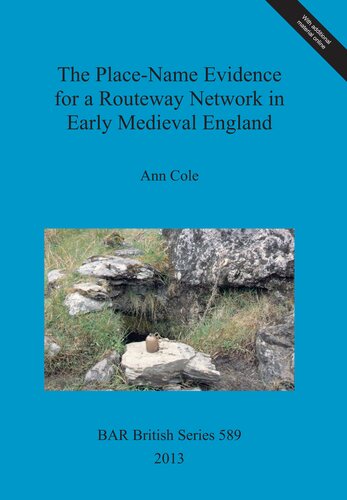

Most ebook files are in PDF format, so you can easily read them using various software such as Foxit Reader or directly on the Google Chrome browser.
Some ebook files are released by publishers in other formats such as .awz, .mobi, .epub, .fb2, etc. You may need to install specific software to read these formats on mobile/PC, such as Calibre.
Please read the tutorial at this link: https://ebookbell.com/faq
We offer FREE conversion to the popular formats you request; however, this may take some time. Therefore, right after payment, please email us, and we will try to provide the service as quickly as possible.
For some exceptional file formats or broken links (if any), please refrain from opening any disputes. Instead, email us first, and we will try to assist within a maximum of 6 hours.
EbookBell Team

4.3
18 reviewsThis study uses place-names to suggest the major routes in use in early medieval England. Many Roman roads existing by the fifth century are known. Some fourteenth century routes in existence can be deduced from the Gough map of c.1360, and seventeenth century routes from Ogilby's road atlas of 1675. Between the fifth and fourteenth centuries there is little information about routes except in scattered charter boundary references. Here it is suggested that this gap can be partially filled using place-name evidence. Certain names such as Stratton, Drayton and Compton occur consistently by Roman roads and a few other old routes but rarely elsewhere. A string of such names along a route suggests that it was in use. Hythe and Eatonindicate waterways in use. The needs of travellers, possible destinations and how such a naming system may have arisen is considered.